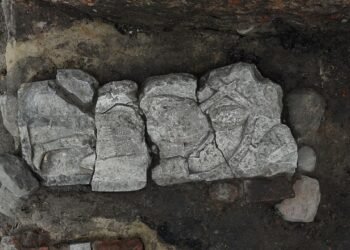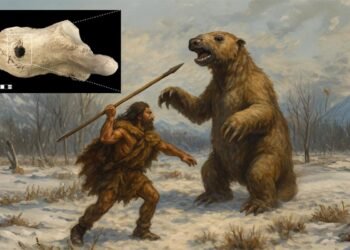An extensive study led by an international team of researchers has uncovered new insights into the history and evolution of the HSV-1 virus, responsible for facial herpes.
According to the World Health Organization, approximately 3.7 billion people worldwide carry a lifelong infection of the HSV-1 virus. Despite its prevalence, little was known about the virus’s origin and global spread until now.

The researchers examined the DNA of teeth from individuals in ancient archaeological sites, identifying four individuals who carried the virus at the time of their death. The study, published in the journal Science Advances, reveals that the variations in modern HSV-1 strains can be traced back to the late Neolithic and early Bronze Age.
Christiana Scheib, co-senior author of the study from Cambridge University, explained that while all primate species have a form of herpes, humans likely had a strain when they first left Africa. However, the research indicates that the modern form of the virus emerged approximately 5,000 years ago, replacing earlier strains.
Two theories were proposed by the researchers to explain this shift. The first suggests that the great migration from Eurasia into Europe around 5,000 years ago could have influenced the virus’s spread. The second theory points to the rise of romantic kissing during that time, providing a new means for the virus to jump between hosts.
Scheib highlighted that the virus typically passes from parent to child, but kissing introduced a novel route for transmission. She noted, “There is some textual evidence starting to show in the Bronze Age of kissing between romantic partners.”
The researchers pointed to a Bronze Age manuscript from South Asia as the earliest known record of kissing, suggesting that the custom may have migrated from Eurasia into Europe. However, Scheib emphasized that kissing is not a universal human trait, making it challenging to pinpoint its exact origins or definitively link it to the spread of HSV-1.
The study’s co-senior author, Charlotte Houldcroft, stressed the importance of “deep time investigations” into viruses, comparing the evolution of facial herpes to Covid-19. She noted that herpes evolves on a “far grander timescale,” with mutations occurring slowly over centuries and millennia.
The researchers advocate for more extensive genetic sampling of viruses, particularly from ancient sources, to gain a deeper understanding of how viruses and immune systems adapt to each other over time.
More information: Guellil M, van Dorp L, Inskip SA, et al. (2022). Ancient herpes simplex 1 genomes reveal recent viral structure in Eurasia. Sci Adv. 8(30):eabo4435. doi: 10.1126/sciadv.abo4435

























